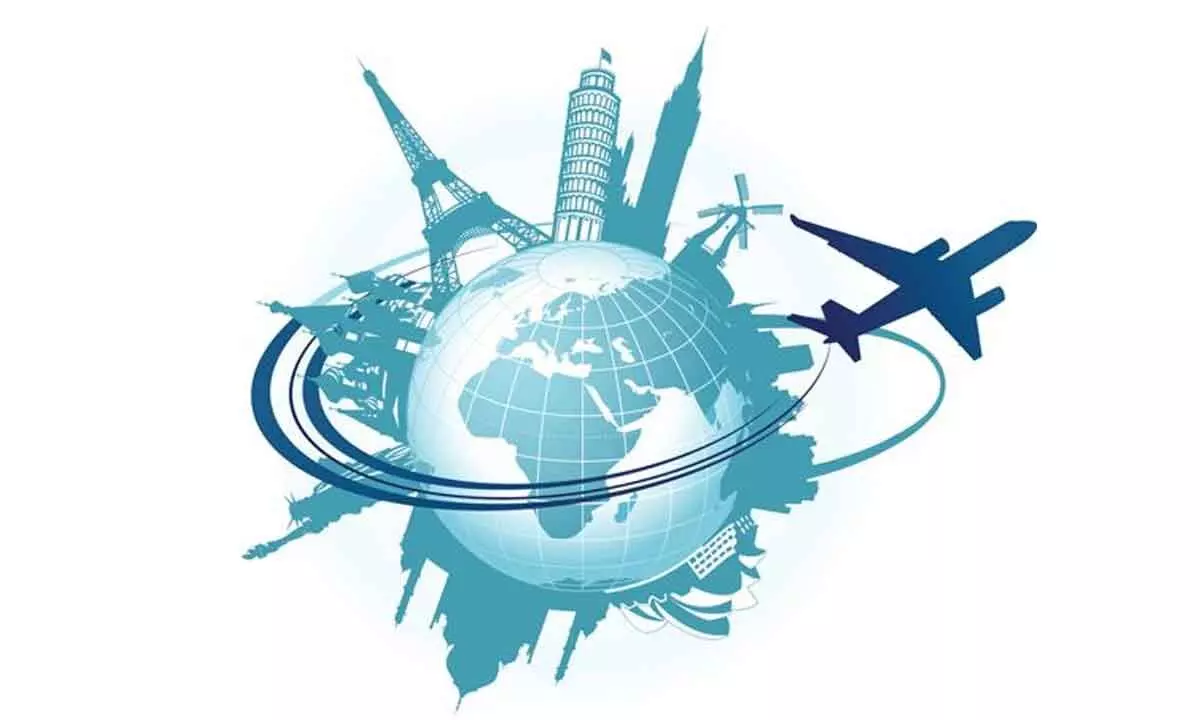India’s outbound tourism market size likely to reach $60 billion by 2031
Spending on travel and tourism is predicted to hit $410 billion by 2030
image for illustrative purpose

Indian travellers are not a homogenous group; destination preferences vary across regions. The purpose of travel, distribution of diaspora, and cultural linkages play a role in deciding the destination. For Indian travellers, the destination choice is driven by regional preference
The national strategy for sustainable tourism aims to mainstream sustainability in the Indian tourism sector and ensure a more resilient, inclusive, carbon neutral and resource efficient tourism while safeguarding natural and cultural resources.
Indians could be the fourth-largest global travel spenders by 2030, according to a recent report by Booking.com and McKinsey.
However, they pointed out that outbound travel accounted for a meagre one per cent of total trips made by Indians last year, trend that is expected to continue until 2030, the report said.
India is expected to become the fourth-largest global spender on travel by 2030, with travel expenditures projected to reach $410 billion. The country's travel industry has shown a strong recovery post-pandemic, with Indian travellers expected to complete five billion trips annually by 2030.
Spending on travel and tourism is predicted to hit $410 billion by 2030, which is a surge of more than 170% from $150 billion in 2019. About 13 million households are expected to have an income distribution of $35,000, a jump from just 2 million in 2020, according to the study.
The country’s forecast growth in GDP per capita, accompanied by a growing propensity for international travel, could lead to a wave of Indian travelers setting out to see the world. If India follows China’s outbound travel trajectory, then its tourists could make 80 million to 90 million trips a year by 2040.
“There is an expected shift in India’s income pyramid, marked by a ~6X growth in households earning $ 35,000 annually by 2030,” the report highlighted.
More than $200 billion have been spent in the last decade to improve India’s transportation sector, and the number of airports has doubled since 2014. To prepare for the growing appetite for travel, Indian airlines have ordered more than 1,000 units of aircraft, bringing the total number of planes to between 1,500 and 1,700 units by 2030, the report showed.
India’s national carrier Air India purchased 470 Airbus and Boeing aircrafts in June as part of its $70 billion fleet expansion program.
Despite an increase in spending power, Indians still prefer to travel domestically, the survey showed.
Apart from Delhi and Mumbai, destinations like Varanasi, Coimbatore and Kochi are becoming popular travel choices, of late.
Where do Indian travellers choose to go? Proximity is a key decision factor. In fact, around 70 percent of travelers choose nearby destinations. With a travel time of less than four hours, and a large Indian diaspora, the Middle East is a destination of choice for around one-third of Indian travelers, closely followed by South Asian destinations. For long-haul trips, North America and Western Europe stand out as preferred choices. While the top destinations have remained fairly consistent over the past decade, others are shaking up the rankings.
Indian travellers are not a homogenous group; destination preferences vary across regions. For example, travellers from North India constitute a large share of travel to the United States and Canada, while two-thirds of travellers from Kerala prefer destinations in the Middle East. The purpose of travel, distribution of diaspora, and cultural linkages play a role in deciding the destination. For Indian travellers, destination choice is driven by regional preference.
According to a market research study published by DPI Research, India’s outbound tourism market size is expected to reach $60 billion by 2031, growing at a CAGR of 10.9% over the forecast period 2023-2031.
Rising personal income levels and greater accessibility will enable international travel for a greater proportion of India’s population. India’s sizable global diaspora and international student body will continue to be a pull factor for visiting friends and relatives. In addition, affluent Indian travelers will seek first-class, personalized experiences that exude cachet.
Business travel will expand in line with commercial interests, with the meetings, incentives, conferences and exhibitions segment (MICE) offering the greatest prospects. The next generation of Indian travelers will be younger, more gender-specific, and less likely to travel in multi-generational family groups. By 2031, an estimated 50 million Indians will travel overseas.
The Central government has said that the country's tourism sector will recover to the pre-pandemic level by mid-2024. It also opined that by 2030, the tourism sector will contribute $250 billion to the country's GDP.

